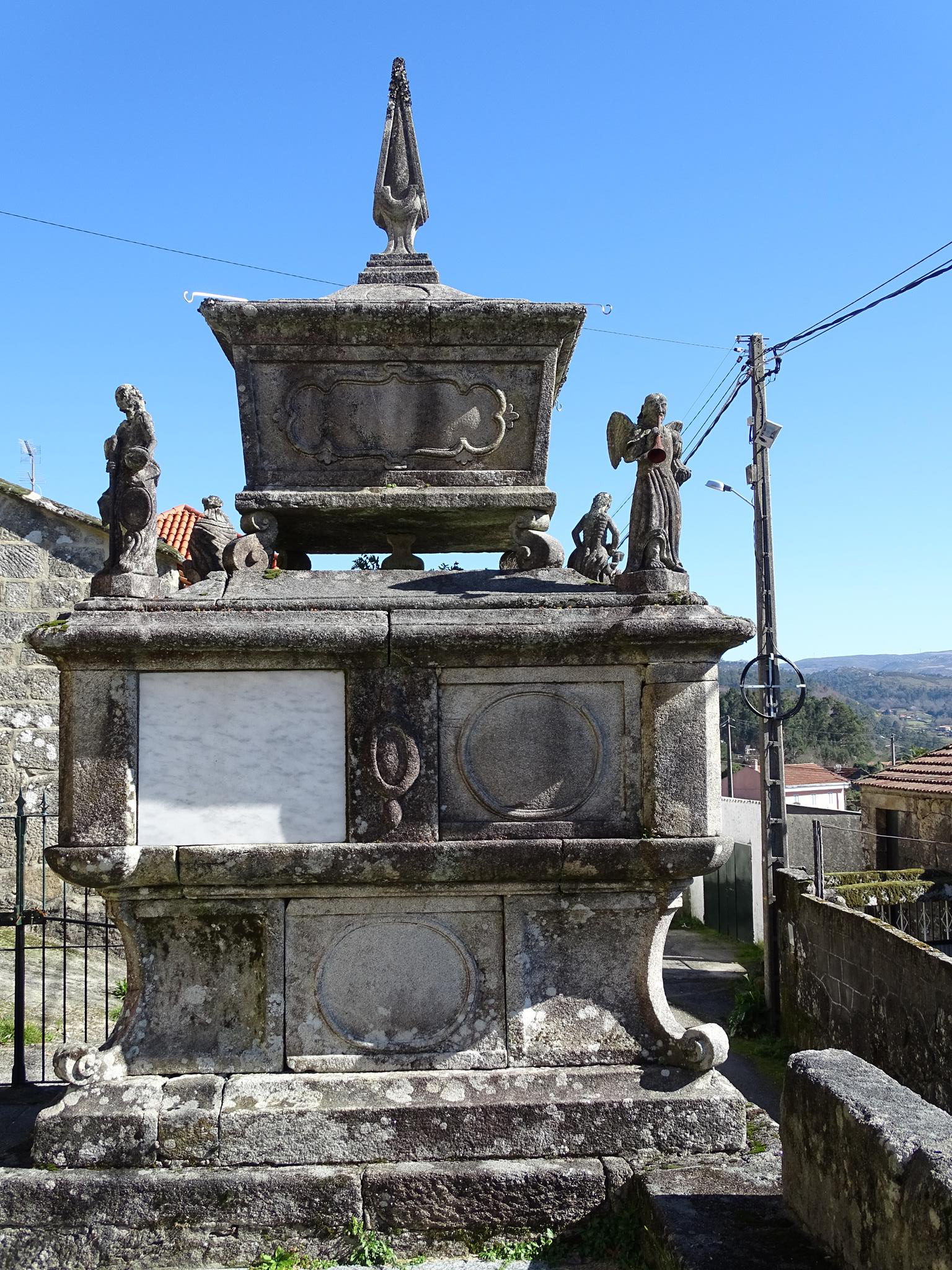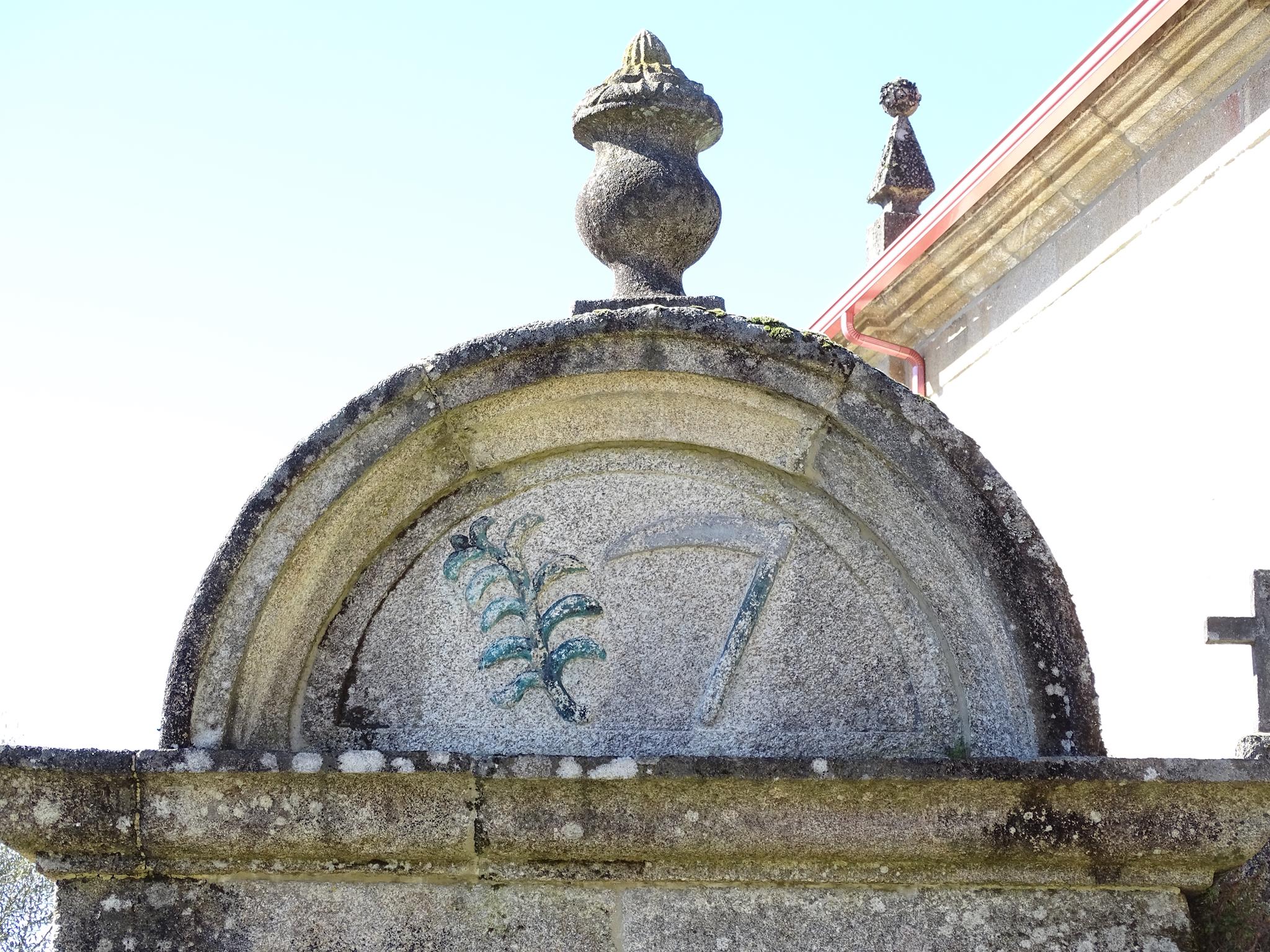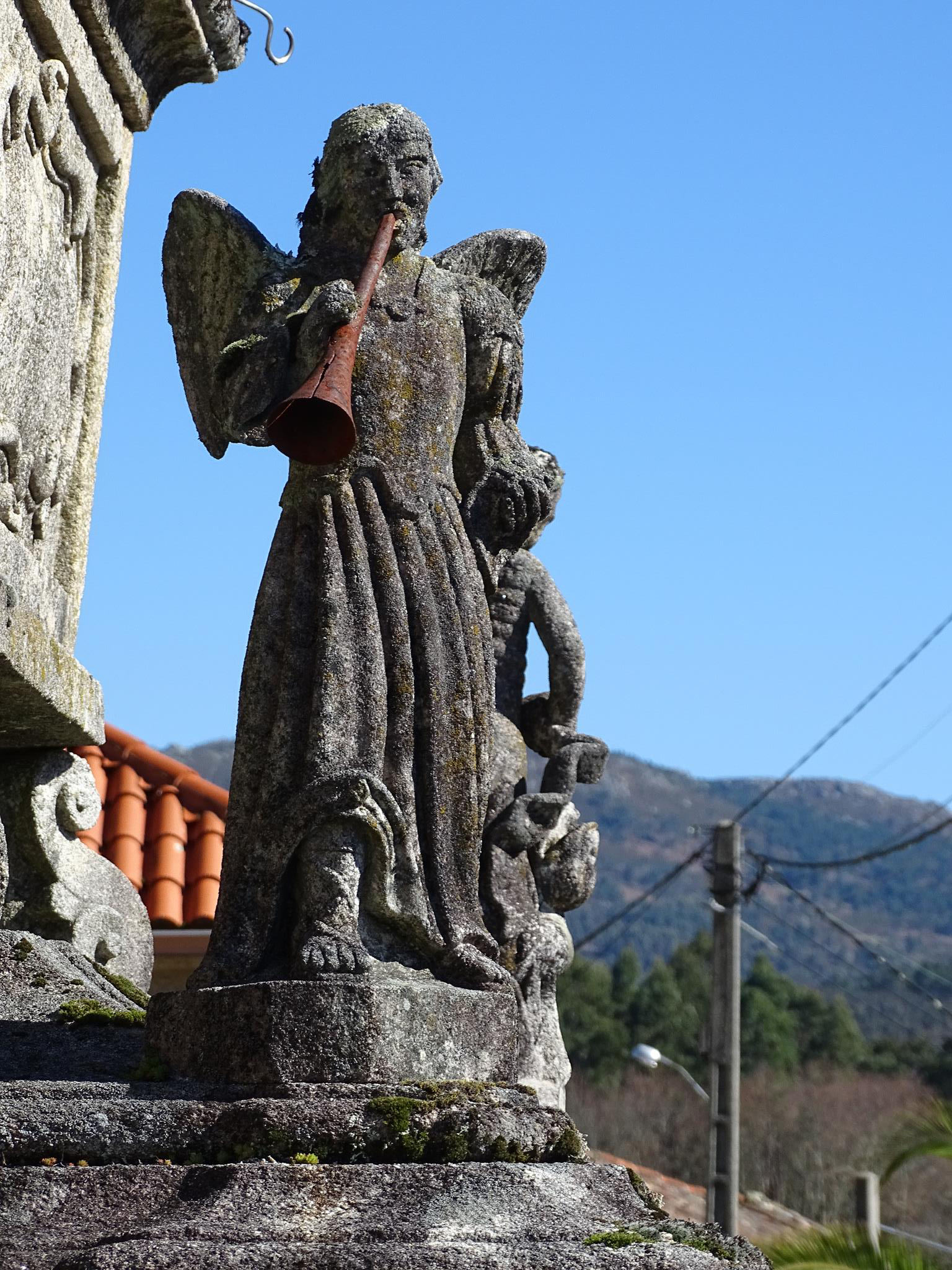Tomb of the atrium
It measures approximately 3 meters in height and appears mounted on a base in the form of steps. Built around the year 1870, it appears divided into two well-differentiated sections: The lower one, with a quadrangular plan, constitutes the space destined for the graves of the members of the titular family. It is made up of two other superimposed units, the lower one merged with the superior, has a single burial casket and also serves as a recipient for the ashes; the corners are decorated with brackets. The upper section, terminating in a cornice, shows two front loading alcoves. The upper part is eminently decorative. In the centre, surrounded by four well executed allegorical sculptures (death, a trumpeter angel announcing the resurrection, hell and heaven or salvation), we see a heavy quadrangular shape, evoking a sarcophagus crowned by a stylized pinnacle that rises due to some angular volutes. On the sides of the sarcophagus commemorative plaques containing commemorative inscriptions were carved. The location of this funerary monument, located at a very visible angle of the churchyard and next to one of the entrances to the temple, gives it a great prominence.




